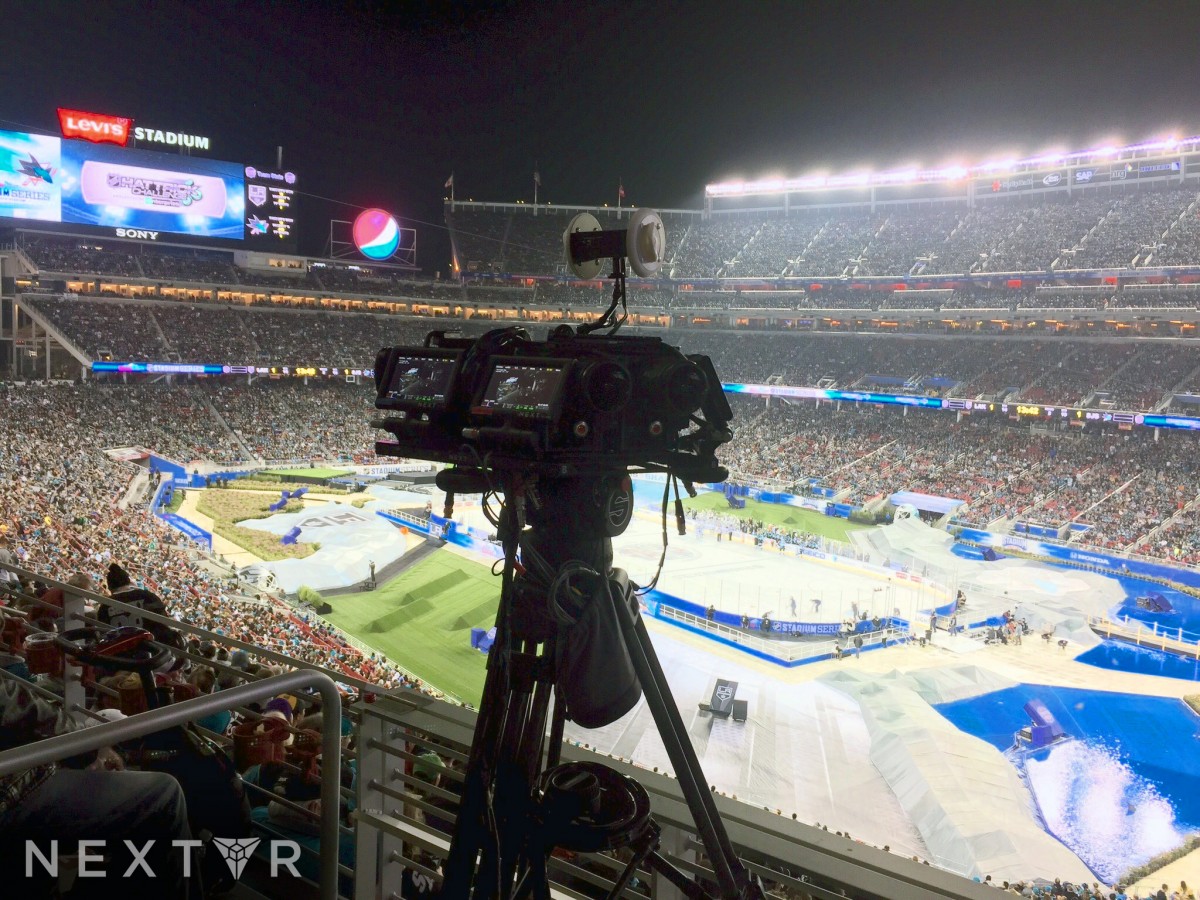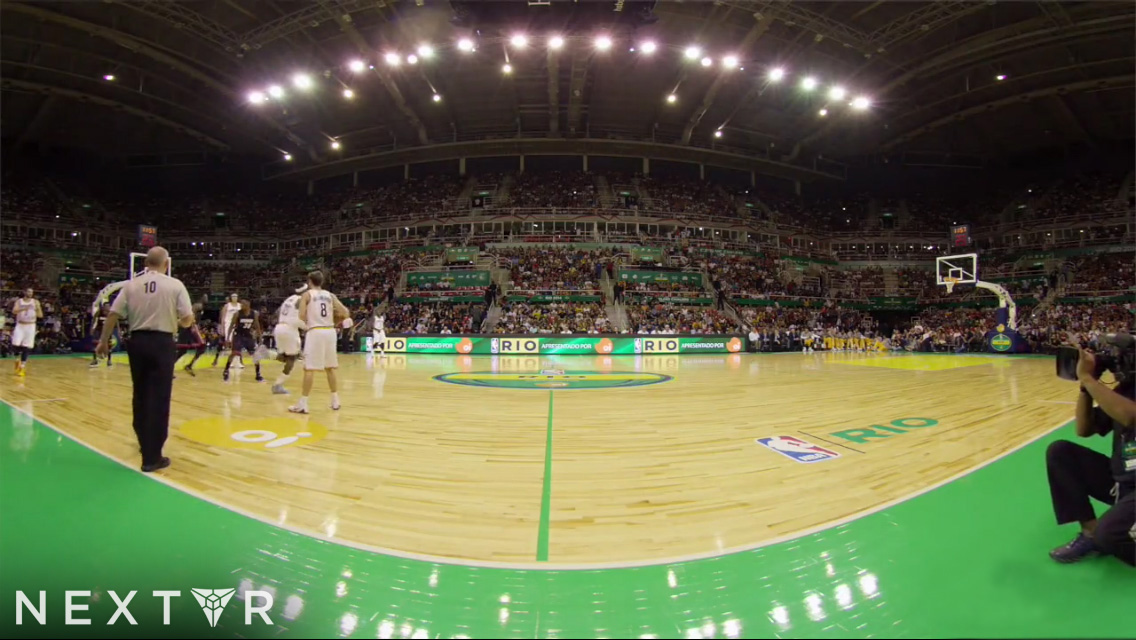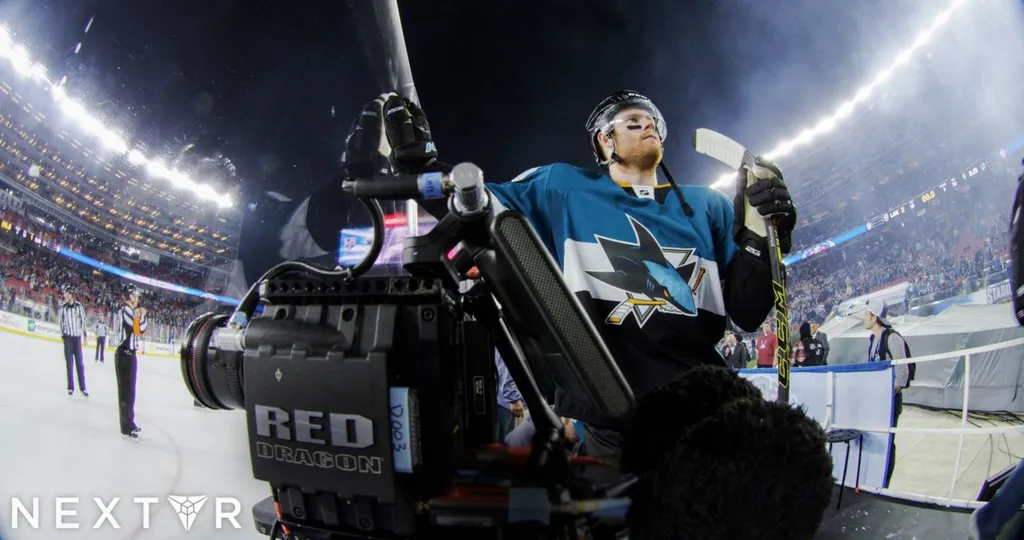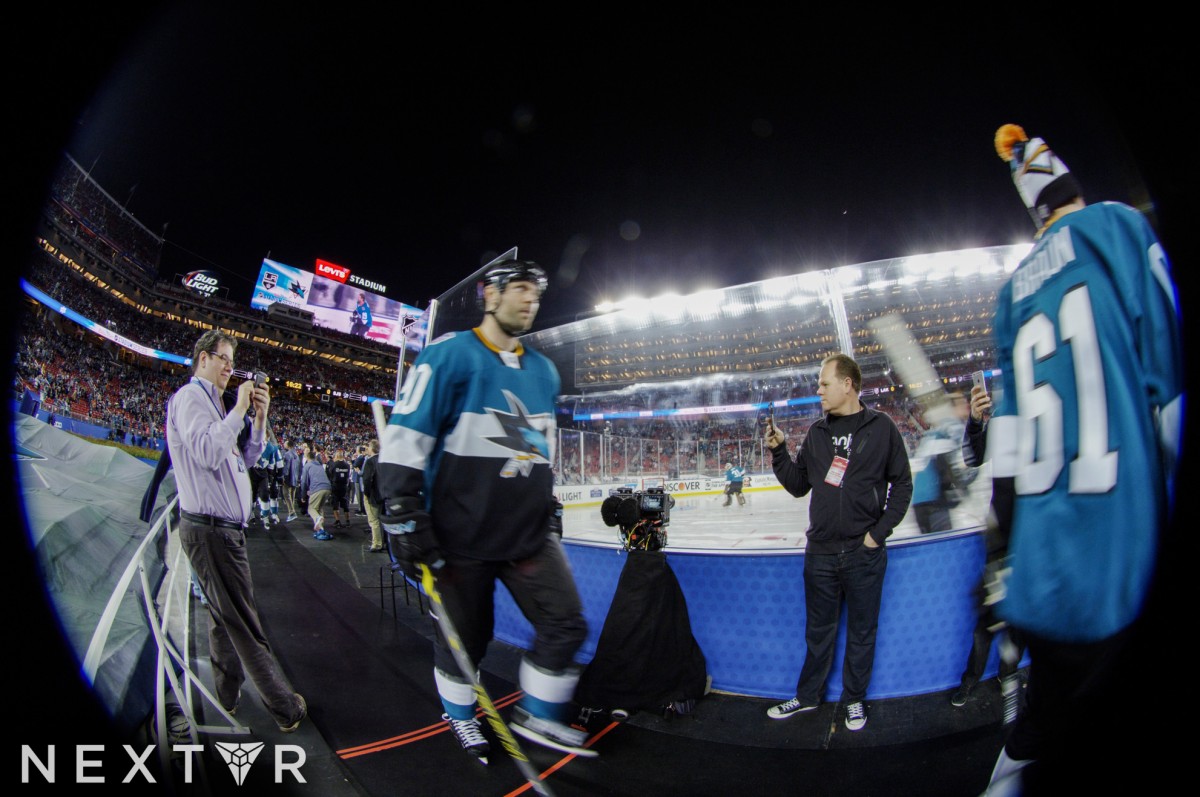Imagine you are sitting at a game, thousands of screaming fans all around you, your face eagerly pressed against the glass waiting for the puck to drop. With next to no time left on the clock your team has to win the faceoff and score to advance to the Stanley Cup Finals. You hold your breath, and will your eyes to stay open. The puck drops. ‘We won the drop!’ Quick pass to the forward who just peeled around from behind. You see it, he sees it, an opening. He pulls his stick back and lays into the puck with a thunderous crack. The buzzer echoes throughout the building as the crowd goes bananas. You cheer and dance up and down in pure jubilation, turning to the person next to you to give them a high five… and then you laugh because you completely forgot you were wearing your virtual reality headset the whole time.
Earlier this month the NBA made it clear that virtual reality was going to be a huge part of their future plans and it appears that the NHL is looking to follow suit. UploadVR has learned the NHL is working with NextVR – a virtual reality company that specializes in live streamed 360-degree 3D video content, to film test footage of its games as the league begins its exploration into the new medium.

The shoot, which was the second the NHL has done, featured a game between the LA Kings and the San Jose Sharks this past weekend at Levi Stadium in San Jose as part of the 2015 Coors Light NHL Stadium Series. Using a pair of cameras, one 180-degree camera placed behind the glass near the end zone faceoff circle and one 360-degree camera placed in the stands, NextVR captured the Kings 2-1 victory over the Sharks. The shoot included a live streamed VR transmission of the game directly from the ice, in 3D.
The NHL, like the NBA, believes that virtual reality will provide fans with never before possible access to sporting events, bringing them so close they are a part of the action, not just watching it. Sports broadcasting in VR has the massive potential to be one of the ‘killer apps,’ and could be a major draw in getting people to adopt the technology at a mass scale. This is because virtual reality adds so much more to the medium of sports broadcasting than any other technology has before it.
Those who followed 3D TV’s rise and fall in the sports world may find those words familiar, as that was supposed to be the next great technology for sports broadcasting. Years and copious amounts of wasted ESPN dollars since, that promise has come up empty, but VR looks to have a different result. DJ Roller, NextVR’s Co-Founder, knows a lot about the 3D debacle, having filmed the first ever live 3D sports broadcast (the 2007 NBA All-Star Game). According to Roller “3D TV wasn’t quite immersive… the user experience was only ¼ of the full 3D resolution,” because the playback resolution was being pumped back through the traditional broadcast infrastructure (which was designed to deliver to one eye, not two, which is double the resolution) this resulted in images that not only didn’t add much to the experience but lead to eyestrain and were shown on screens far too small to create a feeling of immersion. Roller continues though, “our VR technology provides size, scale and depth where 3D TV only provides depth – bringing you closer to feeling like you are there,” a measured improvement over the original 3D TV experience.
Immersion without quality, however, is something that is a big struggle right now for the live action VR video space. Quality is especially important for sports where HDTV has improved the experience exponentially allowing for viewers to easily see the ball/puck and the faces of the players. That is an experience that is a baseline requirement for most viewers, and even the coolest immersive sports experience will quickly lose its novelty after a while if you are sacrificing one’s ability to actually see the action. This is a problem that Roller and NextVR are well aware of and have worked tirelessly to overcome. “One of the things I’m most proud of,” says Roller, “is that you are able to follow the puck in the VR live stream, this was really important to us.” Accomplishing that is no small feat, as it is often difficult to spot details like a fast moving puck with the current hardware we have to shoot and view VR content.
For most setups the resolution simply is not up to par and the lack of 3D is ultimately distracting as you end up feeling you are in a bubble with images projected on the walls. Roller believes that “3D should be a baseline requirement for VR video,” it is simply something we should expect of the medium because it is required for immersion, “you wouldn’t bring a 2D game to Oculus,” he says.
It’s not just best practices that give NextVR an edge for sports broadcasting, it’s their technology as well. One of the reasons that live streamed VR content is hard is because most setups require the use of a process called stitching where the images from multiple cameras are ‘stitched’ together to create a cohesive image. This is a process that takes both time and effort and if not executed perfectly can lead to presence-breaking ‘seams’ in the image. According to Co-Founder and CTO Dave Cole, NextVR avoids this process altogether. NextVR’s camera “senses the geometry of the world as a wireframe,” which allows it to then map the video directly to that frame creating a near-seamless 180/360 image.

This is not NextVR’s first foray into the sports world, nor will it be its last. According to Roller, the company is “talking to every major sports league” about VR involvement and the response has been great. The company previously worked with the NBA to film a preseason match between the Miami Heat and Cleveland Cavaliers in Rio de Janeiro last year. NextVR has been showing off that footage at trade shows including at the NBA’s Annual Technology Summit, but has not yet announced when it will be doing its first public live streamed piece of VR content. According to Roller however, that should be coming “very soon.”
Honestly, it couldn’t come soon enough. As Roller told me, “when you place someone somewhere they could never buy a ticket for, that is pretty compelling content.” That is what is at the heart of the magic behind this technology, enabling ordinary people to have extraordinary experiences. The ability to sit courtside at an NBA game, glass-side at an NHL game, or be on the sidelines at an NFL game is one that should excite any sports fan, the future is now.































